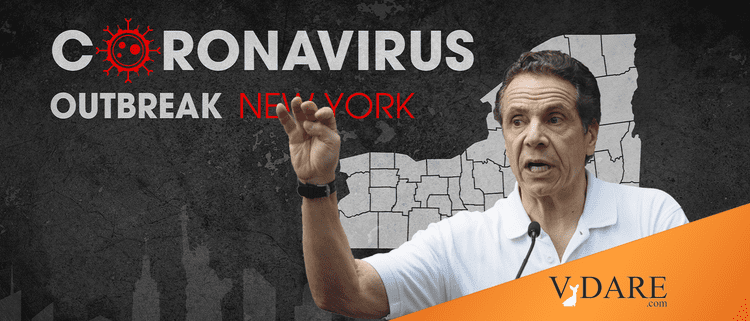From the New York Times news section:
Who’s getting sick now? Older people and those without jobs.
New York State has been shut down for six weeks. Social distancing has become the norm. Face masks are everywhere.
And yet more than 20,000 people a week in the state are still testing positive for the coronavirus. In the past week, more than 5,000 virus patients entered hospitals.
By the way, hospitalizations for coronavirus would seem like the single best statistic to track. Cases depends too much on how much testing is going on, while deaths are too much of a lagging indicator, plus they tend to be focused on the very old. Plus, they hopefully decline as (if?) treatment improves. Plus they are thankfully limited in sample size outside of the New York area, so death trends can be jumpy due to small numbers.
Who are they?
Officials have surveyed hospitals to find out, and Gov. Andrew M. Cuomo said that he was surprised by the results he was reporting on Wednesday.
The governor of New York should have been furnished with this kind of data back on March 6, not on May 6.
More than four in five patients were retired or unemployed. Only 17 percent were working.
Is this unemployed on the day they went to the hospital or unemployed as of, say, March 1?
“We were thinking that maybe we were going to find a higher percentage of essential employees who were getting sick because they were going to work, that these may be nurses, doctors, transit workers,” Mr. Cuomo said. “That’s not the case.”
Here’s a question: Are many healthcare workers and others in high exposure jobs in New York City now taking hydroxychloroquine (or something else) as a prophylactic? It would be kind of nice to know. My impression is that NYC health care workers have not died at the same rate as their peers in Wuhan and northern Italy were dying. If so, why is that?
Virus patients entering hospitals were primarily older: Nearly three in five were over 60, and around one in five entered the hospital from a nursing home or an assisted living facility, the survey found.
Gov. Andrew M. Cuomo of New York said that a majority of coronavirus patients who were recently hospitalized were retired or unemployed.
We asked hospitals, look at just those new cases who are coming in, right. Yesterday, 600 new cases. Where are those people coming from, and what can we learn from those people to further target and refine our strategy? When you look at the racial breakdown of who’s getting hospitalized, you see it’s disproportionately minorities, disproportionately African-American and Latino, again in downstate New York, higher percentage male 52-48. We don’t know exactly why, but the virus doesn’t discriminate generally, and a very high percentage comorbidities, which is what we’ve been talking about. And which we understand, which is not a surprise. This is a surprise: Overwhelmingly, the people were at home. Transportation method: We thought maybe they were taking public transportation. And we’ve taken special precautions on public transportation, but actually no, because these people were literally at home. Were they working? No, they were retired or they were unemployed — only 17 percent working. So that says they’re not working, they’re not traveling, they’re predominately downstate, predominately minority, predominantly older, predominately nonessential employees.
Other results of the three-day survey, which included 113 New York hospitals that had admitted a total of nearly 1,300 patients:
57 percent of hospitalized people were from New York City.
In the city, 45 percent of hospitalized patients were African-American or Latino.
Only 3 percent in New York City had been using public transportation.
96 percent had other underlying health conditions.
But what % of similar individuals have no underlying health conditions? Alternatively, how many underlying conditions do the hospitalized have relative to the population with the same demographic conditions?
37 percent were retired, and 46 percent were unemployed.
Were they long term unemployed or were they unemployed because of the coronavirus crash?
“That says they’re not working, they’re not traveling, they’re predominantly downstate, predominantly minority, predominantly older,” Mr. Cuomo said.
So how are they getting infected?
Here is a question: Clearly, the number of cases in New York City each day is more than the government agency in charge of tracing contacts can handle. But, does that mean they just shut down tracking contacts completely? If they’d continued to interview a random selection of sick people about their contacts, they could at least keep the governor from sounding baffled by his own basic questions about the implications of this data as of May 6th.
[Comment at Unz.com]













